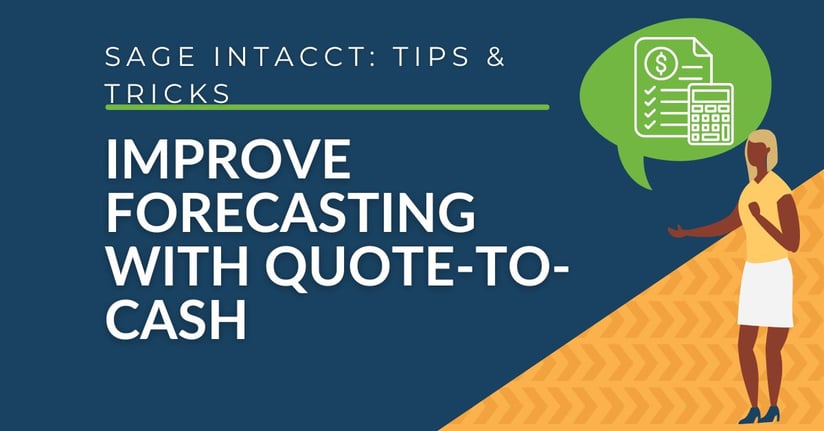
ASC 606 is causing finance pros in software-as-a-service (SaaS) companies a lot of late nights. Revenue forecasting is a complex process, and the revenue recognition criteria only add to the workload—especially if you rely on spreadsheets. Consistency across the quote-to-cash process can simplify forecasting for FP&A practitioners. That’s because consistency can help ensure greater pricing discipline across your sales organization, making it easier to model the implications of the new rev rec rules for stakeholders.
The key to consistency is automation, which requires your customer relationship management (CRM) and enterprise resource planning (ERP) software to function as one system. It works best if the ERP system is built around the customer contract. In this way, all the elements that make up the financial relationship with a customer are captured in the contract to create a single source of truth that can drive billing, accounting, reporting, and ultimately, forecasting in an automated fashion.
Quote-to-cash starts at the customer contract
Here’s how it works: Each contract line item is defined in the CRM system as a single contract to ensure accurate revenue recognition in the ERP software. Similarly, add-on opportunities put into the CRM contract are reflected in the original contract to ensure ongoing compliance with ASC 606.
Both systems should support a variety of billing models. Ideally, users simply define the billing template or rule for each contract line item, and the system auto-generates the billing schedule. Sales can view all billing details to ensure accuracy. In addition, each line item has separate rules for billing and revenue, so revenue can follow an entirely different model. And as with billing, you should be able to automatically schedule out revenue based on a predefined rule.
In support of dual reporting under ASC 606, each contract line item has two revenue schedules—one based on the old guidelines and the other on ASC 606 criteria. Even if an item has to be recognized differently under ASC 606, the dual revenue treatment of every line item is incorporated within the contract.
On a reporting level, users get a real-time view into financial and operational metrics. You can use a dashboard to assemble a variety of reports—including comparative financial statements of both current and ASC 606 guidance on the same P&L. All of this detailed accounting information occurs and is contained within the contract lifecycle. It’s easily and automatically reportable over time at any point in time.
And integrating your ERP system with your planning and forecasting software allows you to pull revenue figures literally from the customer contract, so you can model with confidence. Sage Intacct cloud financial management software and Adaptive Insights provide an ideal example of this. With a purpose-built integration and the ability to automate data imports and mappings between these two systems, organizations can more rapidly translate their ERP data into actionable insights. For SaaS companies faced with the complex task of revenue forecasting in an ASC 606 world, nothing could be better.



